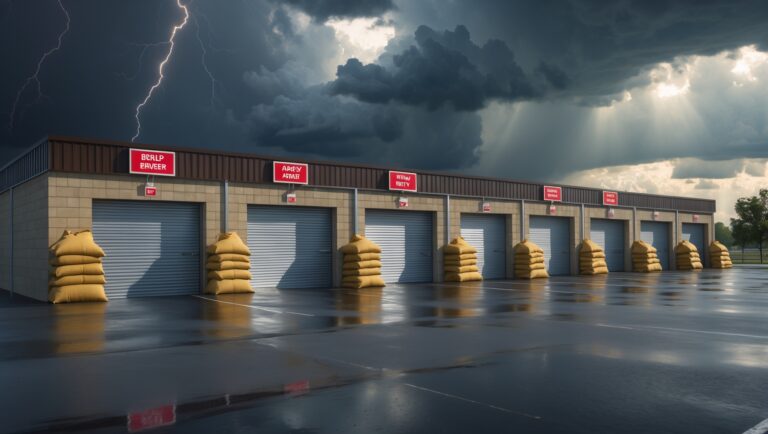A Complete Guide to Moving Company Equipment Maintenance Schedules
Introduction: Why Equipment Maintenance Schedules Matter in the Moving Industry
For moving companies, equipment is more than just a set of tools—it’s the backbone of your operation. Trucks, dollies, hand trucks, furniture pads, and specialized lifts all play a critical role in ensuring moves happen efficiently, safely, and on schedule. Yet, too often, equipment maintenance is treated as an afterthought, only addressed when breakdowns disrupt operations. This reactive approach leads to lost revenue, unhappy clients, safety risks, and higher long-term costs. Establishing a proactive maintenance schedule is not just about keeping things running; it’s about building a reputation for reliability, maximizing your investment, and protecting your crew. In this comprehensive guide, we’ll break down how to set up, implement, and optimize an equipment maintenance schedule tailored to the unique needs of moving businesses. Whether you’re a small local mover or manage a large multi-truck fleet, these strategies will help you reduce downtime, extend equipment lifespan, and ensure every move goes off without a hitch.
Understanding Your Equipment Inventory
Why a Detailed Inventory is Essential
Before you can schedule maintenance, you need a clear understanding of what equipment you own, its age, condition, and maintenance history. An up-to-date inventory is the foundation of any maintenance plan. It allows you to:
- Track usage and wear patterns
- Identify high-risk equipment
- Forecast replacement needs
- Plan preventive maintenance efficiently
How to Build an Effective Inventory List
Include all major assets, such as:
- Trucks and vans (make, model, year, mileage, VIN, maintenance logs)
- Hand trucks/dollies (type, serial numbers, purchase date, notes on condition)
- Furniture pads and straps
- Appliance/furniture lifts and ramps
- Power tools (drills, saws, etc.)
- Warehouse equipment (forklifts, pallet jacks if applicable)
Use digital inventory management tools or simple spreadsheets. Take photos and note any pre-existing damage. Update the inventory quarterly or after significant equipment purchases or retirements.
Setting Up Maintenance Schedules: Frequency and Best Practices
Establishing Maintenance Intervals
The right maintenance frequency depends on equipment type, usage intensity, and manufacturer recommendations. Here’s a general guideline for moving company equipment:
- Trucks/Vans: Oil changes every 5,000-7,500 miles, tire rotations every 6,000 miles, brake and fluid checks monthly, full inspections quarterly.
- Hand Trucks/Dollies: Visual inspection before every use, lubrication and wheel checks monthly, in-depth inspection quarterly.
- Furniture Pads/Straps: Wash and inspect for tears weekly, replace as needed.
- Lifts/Ramps: Test before use, lubricate moving parts monthly, thorough safety check quarterly.
- Power Tools: Clean after each use, check batteries and cords monthly, full servicing twice a year.
- Warehouse Equipment: Follow manufacturer’s maintenance schedule, typically monthly or quarterly.
Creating a Maintenance Calendar
Use digital calendar tools or maintenance management software to create recurring reminders. Assign responsibilities to specific team members, ensuring accountability. Keep maintenance checklists in every truck and post schedules in shared spaces.
Key Elements of an Effective Maintenance Checklist
Truck and Vehicle Maintenance
- Check and change engine oil and filters
- Inspect and rotate tires; check tire pressure
- Test brakes, headlights, and taillights
- Examine suspension and steering components
- Inspect windshields, wipers, and mirrors
- Check all fluid levels (brake, transmission, coolant, washer)
- Clean interior and cargo areas
- Review logbooks for compliance with DOT or local regulations
Hand Trucks and Dollies
- Inspect frames for cracks or bends
- Check wheels for smooth rotation, damage, or wobble
- Lubricate axles and moving joints
- Tighten bolts and replace worn grips
- Test brakes (if equipped)
Furniture Pads, Straps, and Other Accessories
- Inspect for rips, tears, or fraying
- Wash pads as needed to prevent mold or odors
- Check buckles and hooks for secure attachment
- Replace any accessories showing excessive wear
Powered Lifts, Ramps, and Warehouse Equipment
- Test load capacity (without exceeding safe limits)
- Lubricate moving parts
- Inspect for hydraulic leaks (if applicable)
- Check for rust or corrosion
- Test all safety features and emergency stops
Training Your Staff for Maintenance Success
Why Staff Buy-In Matters
No maintenance schedule works without staff engagement. Drivers, loaders, and warehouse workers are your first line of defense against equipment failure. With proper training, they’ll spot issues early and help keep equipment in peak condition.
How to Train Your Team
- Provide hands-on demonstrations for daily and weekly inspections
- Distribute easy-to-follow checklists
- Encourage staff to report problems immediately
- Reward staff for consistent maintenance and prompt reporting
- Hold brief, regular safety meetings to review common maintenance issues
Consider appointing a maintenance champion in each crew—someone responsible for ensuring inspections are done and logs are filled out.
Staying Organized: Maintenance Logs and Recordkeeping
What to Document
- Date and type of maintenance performed
- Parts replaced or issues found
- Who performed the maintenance
- Next scheduled maintenance date
Digital logs are ideal—consider apps or software tailored for fleet and equipment management. For small operators, paper logs kept in a central binder can be sufficient, but ensure they’re updated consistently.
Benefits of Good Recordkeeping
- Simplifies compliance with regulatory inspections
- Helps with warranty claims
- Provides data for cost analysis and equipment replacements
- Demonstrates diligence to insurance providers
Preventive vs. Reactive Maintenance: Cost and Risk Comparison
Understanding Preventive Maintenance
Preventive maintenance involves scheduled servicing, inspections, and part replacements before issues become major problems. This approach:
- Reduces unexpected equipment failures
- Lowers repair costs over time
- Increases equipment lifespan
- Improves safety for staff and clients
The True Cost of Reactive Maintenance
Relying on repairs only when something breaks leads to:
- Unplanned downtime and schedule disruptions
- Emergency repair costs (often higher than scheduled maintenance)
- Lost revenue from delayed or canceled moves
- Increased accident and injury risk
- Damage to customer trust and brand reputation
Industry studies consistently show that preventive maintenance can reduce total maintenance costs by 15–30% compared to a reactive approach.
Special Considerations for Seasonal and High-Use Equipment
Adjusting Schedules for Peak Moving Season
During summer and late spring, moving equipment faces heavier use. Consider the following adjustments:
- Increase inspection frequency for trucks and dollies
- Replace high-wear items (pads, straps) more often
- Schedule major servicing just before peak season begins
- Keep backup equipment ready and maintained
Off-Season Maintenance Opportunities
Use slower months to perform deeper inspections, overhaul vehicles, and repair or replace worn tools. This minimizes downtime during your busiest months and extends your equipment’s active lifespan.
Outsourcing vs. In-House Maintenance
Pros and Cons of Outsourcing
- Access to specialized expertise and diagnostic equipment
- Predictable costs for routine servicing
- No need to hire in-house mechanics
- May entail higher costs for minor repairs and slower response for urgent fixes
When In-House Maintenance Makes Sense
- You have a larger fleet or many tools needing frequent attention
- You want tighter control over schedules and quality
- Quick repairs are critical to your business
Hybrid models also work well—handle basic checks internally, but outsource complex repairs and diagnostics.
Using Technology to Streamline Maintenance
Fleet and Equipment Management Software
Modern software solutions can automate reminders, track expenses, and even predict failures based on usage data. Popular options include Fleetio, MaintainX, and UpKeep. Key features to look for:
- Mobile access for drivers and staff
- Automated scheduling and alerts
- Digital logbooks and photo uploads
- Parts inventory tracking
- Reporting tools for cost analysis
QR Codes and Mobile Checklists
Label equipment with QR codes that staff can scan to access checklists or maintenance histories instantly. This increases compliance and makes recordkeeping seamless.
Regulatory and Insurance Considerations
Meeting Compliance Requirements
DOT and local transportation authorities often require documented vehicle inspections and maintenance logs. Regular maintenance also keeps your vehicles within emission and safety standards.
Insurance Benefits
Some insurance providers offer premium discounts for companies that demonstrate robust maintenance programs. In the event of a claim, thorough logs support your case and reduce liability.
Common Mistakes to Avoid
- Skipping or delaying scheduled maintenance during busy periods
- Failing to replace worn parts in time
- Neglecting low-cost items like straps and pads, which can cause costly damage if they fail
- Overlooking warehouse or office equipment
- Not involving staff in inspections and reporting
- Poor recordkeeping, leading to missed service intervals
Conclusion: Building a Culture of Proactive Maintenance
Setting up and maintaining an equipment maintenance schedule is one of the smartest investments a moving company can make. It’s not just about avoiding breakdowns—it’s about protecting your people, safeguarding your reputation, and controlling costs in a competitive industry. By taking inventory, establishing clear schedules, training your staff, leveraging technology, and keeping thorough records, you lay the groundwork for consistent, reliable operations. The ripple effects are significant: fewer delays, safer moves, reduced repair costs, and happier clients who trust your brand. As your company grows, revisit your maintenance program regularly, adapting it to new equipment, updated regulations, and feedback from your team. Encourage everyone to take ownership of equipment care. Ultimately, a culture of proactive maintenance pays for itself many times over—keeping your business moving forward, no matter what challenges arise on the road.





